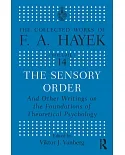Professionals can no longer afford to be uninformed about their professional vulnerability. A better informed public and increasingly litigious society place them at risk for possible legal
action and professional sanctions when they violate professional-client boundaries.
This book addresses boundary violations through the lens of the professional-client relationship, drawing examples of misconduct from law, medicine, religion, education, and
psychotherapy--professions which oblige the professional to place the client’s needs first.
Professional misconduct is commonly defined by content (for example, sexual harassment or misuse of client funds); this practice eclipses the injury to the relationship itself and ignores,
dismisses, or normalizes violations that do not fit within the specific categories of malfeasance or codes of ethics. At Personal Risk expands the spectrum of behaviors that are hurtful to
clients by redefining violations as a process of disconnection that occurs within the relational context.
The first three chapters cover the social context of the relationship, the inherent power differential that delineates the relational boundaries, and professionals’ difficulty with managing
that power appropriately. The fourth and fifth chapters describe the four characteristics of a boundary violation--a reversal of roles, a secret, a double bind, and an indulgence of
professional privilege--and the damage to the client. The sixth chapter prescribes the healing process for the client and the professional, and the seventh examines the blocks to a relational
solution.
Throughout the book, clients share their stories of violations--sometimes blatant, often subtle--in relationships with doctors, therapists, clergy, teachers, and lawyers. These vignettes, along
with Peterson’s engaging style, change ethics from dry, abstract, and theoretical principles to vital struggles to understand and appropriately manage power with clients.
At Personal Risk is preventative, in providing professionals with an early warning system to alert them to impending trouble. It is also unique in that it prescribes the healing that can help
professionals recognize their impact and take steps to restore breached boundaries and repair the relationship.





















